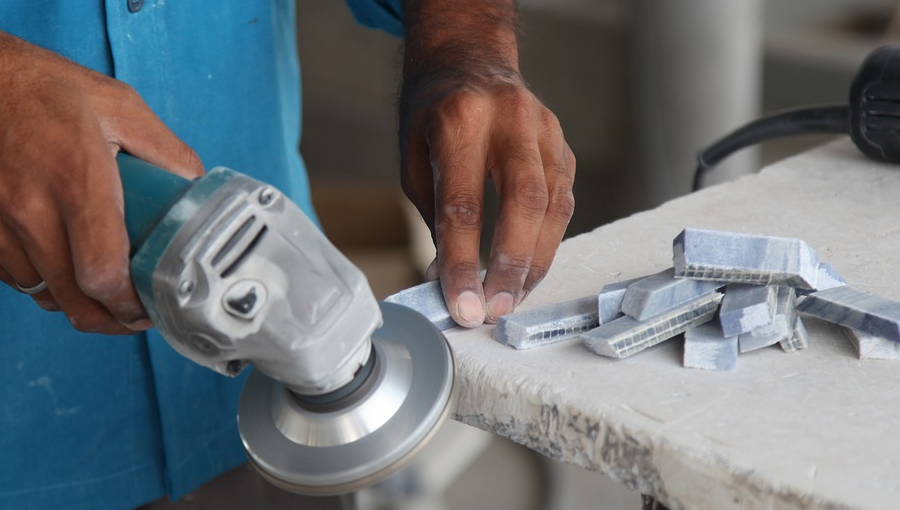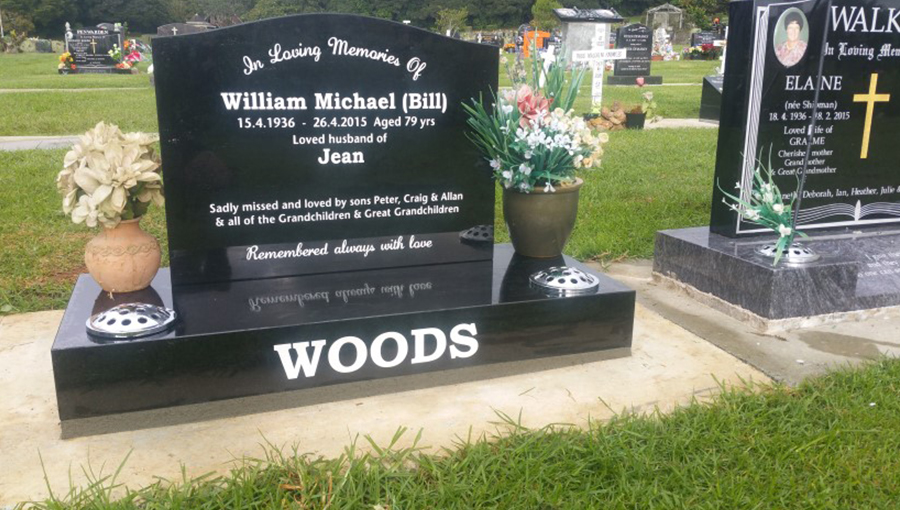
5 Things you need to know before buying a headstone online
May 2, 2020
Our Process
May 25, 2020Northland headstone companies aim to provide the highest quality granites. Nevertheless, when purchasing a headstone, check to see there is no pitting on the surface of the granite. If you stand so that light is reflecting off the stone you might be able to see the tiny pit holes. This is not observable on dense black colour granites which are much easier to restore than other colours with coarse grains. Our recommendation is to choose a colour that will be easy to restore and maintain in the future.
What is Granite?
Granite is said to have a life span of millions of years so it can be considered the most perfect material to create a long lasting memorial that will go on to tell a story for many generations to come.
Granite is a type of stone formation called an igneous rock. It comes from slowly cooled magma deep in the earth, which means it exists under conditions of high pressure. This makes granite very dense and durable. The word “granite” comes from the Latin word “granum” because of the visible grains of minerals on the surface.

Pitting is small indentations or fissures in the natural stone’s surface. It can be caused by the polishing process or an inherent or unique mark of the granite itself. All natural stones have pitting to some extent, though most are barely visible to the naked eye.
New Zealand Granite has many cracks and fissures and it is not easily cut or quarried. When stonemasons work with NZ granite there is a very high risk that the granite will split under pressure. It is for this reason we import our granites from larger and denser continents like India.
The different colour granites we have are quarried from different parts of that continent. The diverse range of colour granites are determined by the amount of quartz, feldspar, mica, amphiboles and other minerals compositions. A lot of granite is exported to China, processed and then exported again to other countries.
We have been in the monumental industry for 28 years. One thing that stands out when working on restorations of headstones is the density of the granite. If you look at the surface of less dense types of granite you can see the visible grains and tiny pit holes. Over time and with rough weather, wear and tear, these pit holes may become larger and more apparent. These little pit holes also make it easier for moss and lichen to attach. This can make restoration work more difficult.
It is important not to get white paint in the tiny pit holes as the headstone will end up with white paint embedded across the surface. If you have a headstone with pitting you can paint a thin layer of black enamel undercoat down as the first layer. This will help fill in any of those tiny pit holes. Allow the black paint to dry. Then apply the top white coat to the letters. Try to paint within the lettering whilst ensuring that each letter is completely covered. Allow the paint to dry before using a flat blade to scrape off any thick dried paint and a nice soft flat piece of pumice to totally eliminate any excess surface paint. Sugar soap is also helpful in cleaning off the granite surface. (Tip: first rub your pumice on flat concrete so that it ends up with a nice flat surface)
Colours available for custom designed memorials
Some stones we may already have in stock in this colour. Ask our staff for more information.



